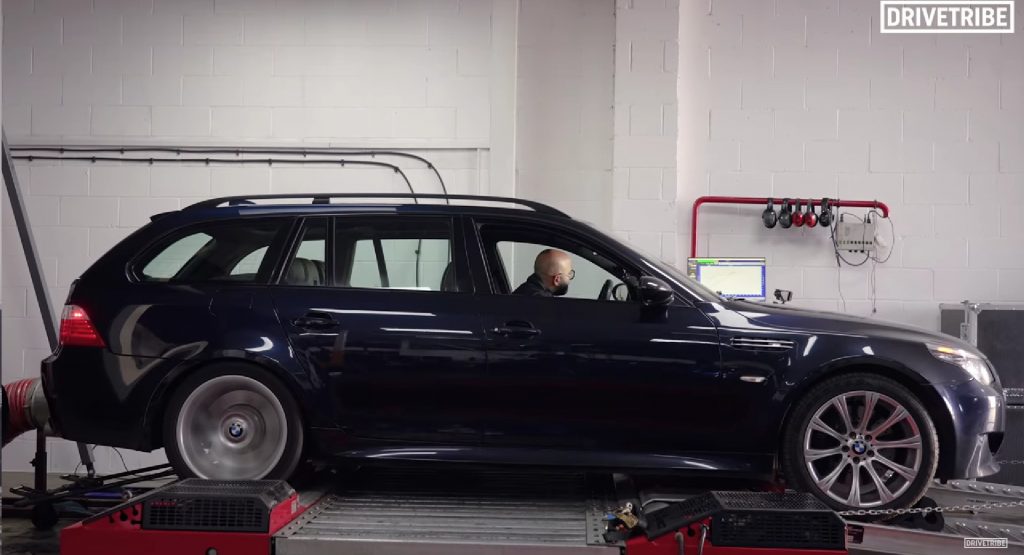It is well known now that BMW and some of its rivals have a tendency to be conservative with their horsepower estimates, but how accurate was the Bavarian automaker when it came to its lower power modes?
BMW is famed for its driving modes and since introducing the M button, like the one in DriveTribe’s 15-year-old E61 M5 Touring, most of the attention has gone into how much power the engine is capable of developing in its highest-power mode.
In the E61, for instance, the V10 engine was supposed to make 500 hp (373 kW/507 PS), but in its lower power mode, used for driving around town in a more responsible way, BMW claimed the car made more like 394 hp (294 kW/400 PS). Given the use of a dyno, DriveTribe decided to find out how honest the automaker was about those figures.
Read Also: How Much Power Does The Toyota GR 86 Actually Have?
“Considering when I’m just kicking around town and driving about normally, I’m in that 400 [metric] horsepower mode, I’d like to see how much power it’s creating then,” says Mike Fernie. “After that, we will then click the M button, let those 10 cylinders breathe freely, and see if it can back up to the figure, which I think is 507 [metric] horsepower.”
It’s also important to note here that this is a 15-year-old car. Another widely known fact about cars that dynos have taught is that over time, horaepower tends to diminish over time as wear, tear, and gunk combine to rob an engine of its full team of horses. As covered in previous videos about this M5 Touring, though, the team at DriveTribe has given it a proper tune-up to bring it back to as close to new as possible.
And their mechanics were good because this M5 makes even more power than advertised on this dyno. Churning out 510.8 horsepower in M mode and 398.2 hp in the non-M mode, it turns out that this wagon is still making almost exactly as much power as advertised, if not more, even after all of these years.




